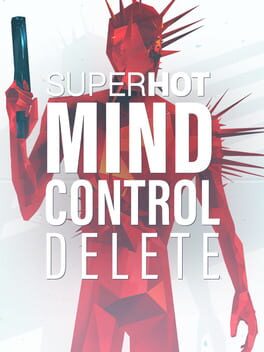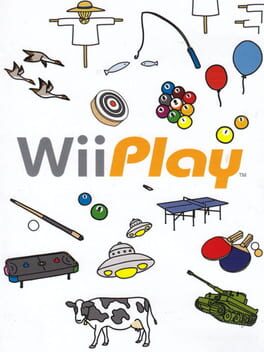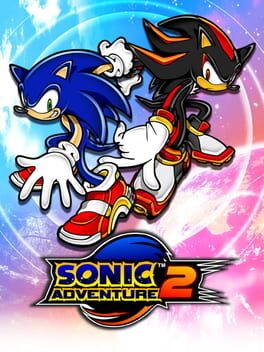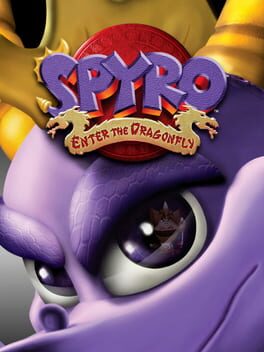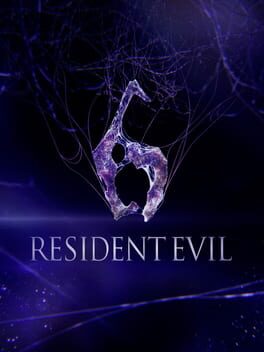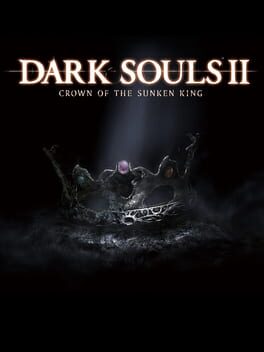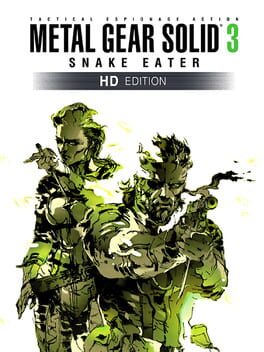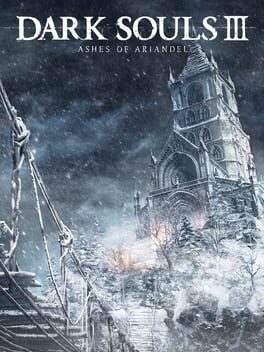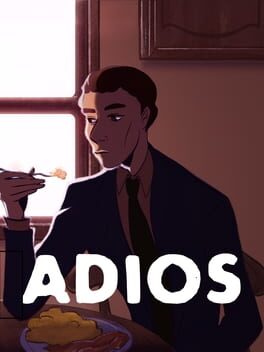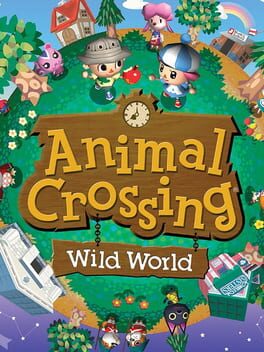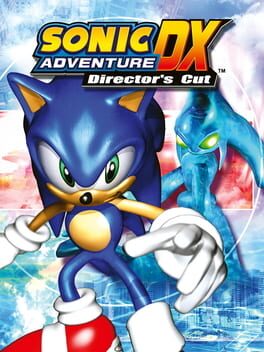Devixicus
2006
2001
This review contains spoilers
The swan song of Sonic Team's time on Sega hardware: Sonic Adventure 2 is truly a one-of-a-kind game. While closest to Adventure 1 in styling and presentation, SA2 is really its own beast in terms of gameplay and storytelling. Instead of being an open-ended adventure RPG-like game, SA2 is instead a cutscene heavy arcade-style score attack action platformer. The combat is very simple just like classic Sonic, but much like Sonic the Hedgehog 2 did to the formula of Sonic 1, it expanded the challenge of the level design while fine tuning the controls to be more expressive. It pains me to imagine how great a true sequel to this game, like Sonic the Hedgehog 3 was to 2, could have been if it stuck to this trajectory.
It's hard to talk about anything other than the story in this game first, simply because the plot is so wonderfully written and presented compared to even the greatest 3D platformer stories around, both back then and today. This game's "story mode" is split between two long campaigns, the Hero Story and Dark Story, and a short finale similar to Super Sonic's in Adventure 1, simply titled "Last Story". Within each story you hop between three gameplay styles: Speed (Sonic and Shadow), Treasure Hunting (Knuckles and Rouge), and Shooting (Eggman and Tails). The plot is told chronologically from the perceptive from each team, with Dark Story starting slightly earlier as Eggman is the one to kick off the plot.
The Hero Story starts with Sonic escaping government capture for mysterious reasons, slowly revealed to be a doppelganger hedgehog stealing Chaos Emeralds for Eggman's plot to force the world into submission to his rule. Tails is quick to help break Sonic out of prison, and eventually Knuckles gets roped in as he is also looking to track the villains to find Master Emerald pieces that Rouge is after. But Eggman is not playing around like in Adventure 1, and he successfully blows up part of the moon in a threat to basically all world governments. So the team goes into space to chase him down to an abandoned space colony that he's using as his mega weapon, and the third act is just absolute bliss. Sonic, Tails, Knuckles, and Amy all get legendary character-defining scenes and this is by far my favorite portrayal of just about every character involved.
Dark Story, on the other hand, has a different appeal. While the heroes worked together and gave each other favors, all three dark members were secretly plotting against each other in some way. Eggman was the de facto ringleader for his boastful personality and legion of robots, but Shadow ultimately wanted to use him for his own goals of complete revenge against all of humanity. Rouge the Bat, my personal favorite of the lot, she assists the two of them just to get information and relay it to the President of the United States (a named and voiced character in this game). Many people make out Shadow to be this painfully edgy character, but his debut storyline is actually extremely well handled. He's been traumatized out of his short life of normalcy, and forced to take on false memories to fuel a desire for absolute destruction.
Speaking of Shadow's story, it crescendos at the Last Story, as both teams put aside their differences and create a temporary alliance to save the world from Gerald Robotnik's auto-crash sequence programmed into Space Colony ARK. As everyone else works together, Amy talks Shadow out of his confusion and he remembers Maria Robotnik, his only true friend, and what she truly said to him as she died instead of his false memory of her anger. In a moment of clarity, Shadow drops his entire mission to help the rest of the team stop the colony, eventually sacrificing himself to finish the job and warp them all back up to safety. The credits roll over the team meeting one last time and remembering the friend they all just lost, as Sonic cheers the rest up he says his final goodbye to someone he trusted the fate of the entire world to. The plot of this entire game wraps up so well and the ride is so fun, it's genuinely one of the strongest stories of any video game shooting for this age demographic.
In terms of gameplay, Sonic Adventure 2 is significantly more difficult and complex than its predecessor, SA1. Speed type characters are put in more precarious and action-packed scenarios than before, and the level design has expanded to become denser with alternate paths, secret nooks and crannies, and fancier setpieces. Though still simple to play and complete as a kid, the game now features a score grade system, in which you are evaluated for how fast you play, what tricks you pull off, finding secrets in the levels and taking optimal paths, et cetera. The gameplay might feel a bit less intuitive to start with, but with practice it becomes very expressive and fun. And with such a large number of levels and alternate objectives, there's always more to come back to here.
Treasure hunting, on the other hand, has expanded to become slower and more exploratory instead. Knuckles could easily find every emerald shard in the previous game in only a minute or two, but now the stages are greatly expanded in size and design variety. An unfortunate change is that the emerald detector now only gives one emerald's location at a time instead of all at once. However, it's not all bad as you get more familiar with the stage layouts and gradually get faster times for A ranks. Though, the final space stages for Knuckles and Rouge border on being a tad too large in my opinion, as casual playthroughs of the stages can easily pass 20 minutes which is rather tedious.
Shooting is an interesting case, as it's a continuation of the gameplay style e-102 Gamma had in the first Sonic Adventure. However, it's been retooled to fit a clunky Eggman mecha and then later to Tails' new mecha plane as well. Movement is a bit slower and more restrictive, and the focus is on racking up combos for points (and therefore achieve an A rank) as opposed to outpacing a level timer. It pains me that the movement took a hit as Gamma was actually quite nimble and fun to move with, though it does allow for some great new shooting gallery-style levels that take the concept further than Gamma ever could while he mostly reused Sonic stages. As far as platformer-shooter hybrids go, this one plays quite well and has great replay value, though it doesn't quite hold up against the PS2 Ratchet and Clank games. It has a similar feel to an on-rails shooter as well in the presentation of levels.
While those are the core gameplay styles, the game also has a couple more tricks up its sleeve. A couple highway driving levels are included, and they control more like a quick and dirty arcade racer than the kart racers most kids are familiar with. The controls are acceptable but rather strange feeling, but it's a short distraction for the most part. There's also the Chao Garden, which was greatly expanded from its limited options in the original Sonic Adventure. Chao can now have affinities for good or evil that lead them to becoming either Angel or Devil Chao, each with their own garden zone to hang out in. The races are longer and factor in more stats, and the VMU Chao Adventure game has also been greatly expanded in content (though it's still a Tamagotchi clone that will give you bad luck at random).
Chao raising is a long term process that takes longer than a full playthrough of the story mode, which encourages replaying the action stages for more animal buddies and chaos drives to boost stats for races. And the more you play the stages, the better you get and the higher your ranks trend. Every stage also has four side objectives, which also give letter ranks but only for completion time. All of this combined makes this game downright addicting and very hard to put down. Sonic Adventure 1 was a game that had me craving more, but Adventure 2 delivers on content just on the level of how replayable just about every part of it is. I was looking to get 100% completion on this playthrough but technical difficulties lead me to drop the task before finishing it. I'll give it another go one day, perhaps on Steam or with a more consistently working Dreamcast.
One thing I first got to appreciate with this replay has been the original Japanese voice acting, which is just as wonderful as in the previous game and is better timed to the cutscenes' animation than the notoriously poorly paced English dub. The Japanese cast really nailed every role out of the gate, and this game solidified their sound in a story more serious than ever before. Newcomers Shadow and Rouge have standout performances here just as they do in English. And luckily, both the American and Japanese discs are identical and include dual audio so you can choose which track you like more or switch as you feel like it. Just a head up: the Japanese version is much, much, much cheaper.
On the subject of the English cast, this is Ryan Drummond's best work on the character by far. Tails' voice (Connor Bringas, family member of previous Tails actor Corey Bringas) is an improvement, and Scott Drier as Knuckles is a different vibe but fits the character in this story extremely well. Deem Bristow's Eggman is an absolute treat and he's just lovely here as always. Much like almost every other character, Shadow (David Humphrey) and Rouge (Lani Minella) have this game's voices in my head and never the replacement actors they've had over the years. Jennifer Douillard as Amy isn't popular but I personally think she does a great job portraying the character's young naivety. The voice direction here is a lot more solid than before, with the drama coming out much more naturally as the characters emote more properly for their given situations. And given the strong cutscene direction, it all adds to a wonderful presentation, even as characters talk over each other unusually at points.
Of course, we cannot forget this game's absolutely legendary soundtrack. Running with the rock-electronic fusion sound Sonic Adventure is known for, SA2 expands the sound by giving each character their own distinct flavor of music. Sonic's stages are action-packed rock songs, Tails' more complex and on the progressive and synth-heavy side. Knuckles, on the other hand, has exquisite hip hop backing every stage for the slower nature of the gameplay. On the dark side, Eggman's tracks start dipping into metal sensibilities with heavy and menacing guitar and bass riffs. Shadow's music is mostly from an electronic post-grunge angle with some punk rock to spice things up. Finally, Rouge jams out to smooth and light jazz, perfect for the classy spy archetype she fits in the story.
Finishing thoughts: This was the final truly coherent Sonic the Hedgehog game. From Sonic 1 all the way until here, there was a clear progression and logical thread to the overarching series storyline. Some may feel Adventure was a grand departure from the classics, but in my opinion the jump isn't all that large. Sonic and friends simply moved onto life closer to people, and they factor more into Eggman's plots than before as he now wants to rule over people as well as nature. And a hollywood-style blockbuster story like this was a perfect capstone to Sonic Team's greatest years in my opinion. The hedgehog lives on in our hearts and continues to put out great games from time to time, but he will never be the same as that starry eyed hero who left us with the words "Sayonara, Shadow the Hedgehog".
It's hard to talk about anything other than the story in this game first, simply because the plot is so wonderfully written and presented compared to even the greatest 3D platformer stories around, both back then and today. This game's "story mode" is split between two long campaigns, the Hero Story and Dark Story, and a short finale similar to Super Sonic's in Adventure 1, simply titled "Last Story". Within each story you hop between three gameplay styles: Speed (Sonic and Shadow), Treasure Hunting (Knuckles and Rouge), and Shooting (Eggman and Tails). The plot is told chronologically from the perceptive from each team, with Dark Story starting slightly earlier as Eggman is the one to kick off the plot.
The Hero Story starts with Sonic escaping government capture for mysterious reasons, slowly revealed to be a doppelganger hedgehog stealing Chaos Emeralds for Eggman's plot to force the world into submission to his rule. Tails is quick to help break Sonic out of prison, and eventually Knuckles gets roped in as he is also looking to track the villains to find Master Emerald pieces that Rouge is after. But Eggman is not playing around like in Adventure 1, and he successfully blows up part of the moon in a threat to basically all world governments. So the team goes into space to chase him down to an abandoned space colony that he's using as his mega weapon, and the third act is just absolute bliss. Sonic, Tails, Knuckles, and Amy all get legendary character-defining scenes and this is by far my favorite portrayal of just about every character involved.
Dark Story, on the other hand, has a different appeal. While the heroes worked together and gave each other favors, all three dark members were secretly plotting against each other in some way. Eggman was the de facto ringleader for his boastful personality and legion of robots, but Shadow ultimately wanted to use him for his own goals of complete revenge against all of humanity. Rouge the Bat, my personal favorite of the lot, she assists the two of them just to get information and relay it to the President of the United States (a named and voiced character in this game). Many people make out Shadow to be this painfully edgy character, but his debut storyline is actually extremely well handled. He's been traumatized out of his short life of normalcy, and forced to take on false memories to fuel a desire for absolute destruction.
Speaking of Shadow's story, it crescendos at the Last Story, as both teams put aside their differences and create a temporary alliance to save the world from Gerald Robotnik's auto-crash sequence programmed into Space Colony ARK. As everyone else works together, Amy talks Shadow out of his confusion and he remembers Maria Robotnik, his only true friend, and what she truly said to him as she died instead of his false memory of her anger. In a moment of clarity, Shadow drops his entire mission to help the rest of the team stop the colony, eventually sacrificing himself to finish the job and warp them all back up to safety. The credits roll over the team meeting one last time and remembering the friend they all just lost, as Sonic cheers the rest up he says his final goodbye to someone he trusted the fate of the entire world to. The plot of this entire game wraps up so well and the ride is so fun, it's genuinely one of the strongest stories of any video game shooting for this age demographic.
In terms of gameplay, Sonic Adventure 2 is significantly more difficult and complex than its predecessor, SA1. Speed type characters are put in more precarious and action-packed scenarios than before, and the level design has expanded to become denser with alternate paths, secret nooks and crannies, and fancier setpieces. Though still simple to play and complete as a kid, the game now features a score grade system, in which you are evaluated for how fast you play, what tricks you pull off, finding secrets in the levels and taking optimal paths, et cetera. The gameplay might feel a bit less intuitive to start with, but with practice it becomes very expressive and fun. And with such a large number of levels and alternate objectives, there's always more to come back to here.
Treasure hunting, on the other hand, has expanded to become slower and more exploratory instead. Knuckles could easily find every emerald shard in the previous game in only a minute or two, but now the stages are greatly expanded in size and design variety. An unfortunate change is that the emerald detector now only gives one emerald's location at a time instead of all at once. However, it's not all bad as you get more familiar with the stage layouts and gradually get faster times for A ranks. Though, the final space stages for Knuckles and Rouge border on being a tad too large in my opinion, as casual playthroughs of the stages can easily pass 20 minutes which is rather tedious.
Shooting is an interesting case, as it's a continuation of the gameplay style e-102 Gamma had in the first Sonic Adventure. However, it's been retooled to fit a clunky Eggman mecha and then later to Tails' new mecha plane as well. Movement is a bit slower and more restrictive, and the focus is on racking up combos for points (and therefore achieve an A rank) as opposed to outpacing a level timer. It pains me that the movement took a hit as Gamma was actually quite nimble and fun to move with, though it does allow for some great new shooting gallery-style levels that take the concept further than Gamma ever could while he mostly reused Sonic stages. As far as platformer-shooter hybrids go, this one plays quite well and has great replay value, though it doesn't quite hold up against the PS2 Ratchet and Clank games. It has a similar feel to an on-rails shooter as well in the presentation of levels.
While those are the core gameplay styles, the game also has a couple more tricks up its sleeve. A couple highway driving levels are included, and they control more like a quick and dirty arcade racer than the kart racers most kids are familiar with. The controls are acceptable but rather strange feeling, but it's a short distraction for the most part. There's also the Chao Garden, which was greatly expanded from its limited options in the original Sonic Adventure. Chao can now have affinities for good or evil that lead them to becoming either Angel or Devil Chao, each with their own garden zone to hang out in. The races are longer and factor in more stats, and the VMU Chao Adventure game has also been greatly expanded in content (though it's still a Tamagotchi clone that will give you bad luck at random).
Chao raising is a long term process that takes longer than a full playthrough of the story mode, which encourages replaying the action stages for more animal buddies and chaos drives to boost stats for races. And the more you play the stages, the better you get and the higher your ranks trend. Every stage also has four side objectives, which also give letter ranks but only for completion time. All of this combined makes this game downright addicting and very hard to put down. Sonic Adventure 1 was a game that had me craving more, but Adventure 2 delivers on content just on the level of how replayable just about every part of it is. I was looking to get 100% completion on this playthrough but technical difficulties lead me to drop the task before finishing it. I'll give it another go one day, perhaps on Steam or with a more consistently working Dreamcast.
One thing I first got to appreciate with this replay has been the original Japanese voice acting, which is just as wonderful as in the previous game and is better timed to the cutscenes' animation than the notoriously poorly paced English dub. The Japanese cast really nailed every role out of the gate, and this game solidified their sound in a story more serious than ever before. Newcomers Shadow and Rouge have standout performances here just as they do in English. And luckily, both the American and Japanese discs are identical and include dual audio so you can choose which track you like more or switch as you feel like it. Just a head up: the Japanese version is much, much, much cheaper.
On the subject of the English cast, this is Ryan Drummond's best work on the character by far. Tails' voice (Connor Bringas, family member of previous Tails actor Corey Bringas) is an improvement, and Scott Drier as Knuckles is a different vibe but fits the character in this story extremely well. Deem Bristow's Eggman is an absolute treat and he's just lovely here as always. Much like almost every other character, Shadow (David Humphrey) and Rouge (Lani Minella) have this game's voices in my head and never the replacement actors they've had over the years. Jennifer Douillard as Amy isn't popular but I personally think she does a great job portraying the character's young naivety. The voice direction here is a lot more solid than before, with the drama coming out much more naturally as the characters emote more properly for their given situations. And given the strong cutscene direction, it all adds to a wonderful presentation, even as characters talk over each other unusually at points.
Of course, we cannot forget this game's absolutely legendary soundtrack. Running with the rock-electronic fusion sound Sonic Adventure is known for, SA2 expands the sound by giving each character their own distinct flavor of music. Sonic's stages are action-packed rock songs, Tails' more complex and on the progressive and synth-heavy side. Knuckles, on the other hand, has exquisite hip hop backing every stage for the slower nature of the gameplay. On the dark side, Eggman's tracks start dipping into metal sensibilities with heavy and menacing guitar and bass riffs. Shadow's music is mostly from an electronic post-grunge angle with some punk rock to spice things up. Finally, Rouge jams out to smooth and light jazz, perfect for the classy spy archetype she fits in the story.
Finishing thoughts: This was the final truly coherent Sonic the Hedgehog game. From Sonic 1 all the way until here, there was a clear progression and logical thread to the overarching series storyline. Some may feel Adventure was a grand departure from the classics, but in my opinion the jump isn't all that large. Sonic and friends simply moved onto life closer to people, and they factor more into Eggman's plots than before as he now wants to rule over people as well as nature. And a hollywood-style blockbuster story like this was a perfect capstone to Sonic Team's greatest years in my opinion. The hedgehog lives on in our hearts and continues to put out great games from time to time, but he will never be the same as that starry eyed hero who left us with the words "Sayonara, Shadow the Hedgehog".
2012
This was a tough one to write for me. Somehow I've played almost every single numbered game in this series and I feel like I'm missing something here. Is it because I didn't watch the movies this game is trying so hard to emulate? Most likely. But I'll try to understand this game on its own terms as best I can. It's the logical endpoint of the sales of REs 4 and 5 in the US. Obviously people wanted more co-op, more action, more explosions, more gore, more hollywood style... The cutscenes are great schlock for the most part, don't get me wrong.
This game has really deep combat as far as I understand. I never got into it because to me the perks all felt superfluous and I never knew when I was or wasn't supposed to hang around and shoot things. That was always clear in 4/5, you'd always know when you were in danger and should kill enemies, and only rarely and when you understood would you be tasked with avoiding and running. There's great weight to some of the animations, but the base movement is far too fast and fluid for your character to feel like they actually inhabit the space their model occupies on screen.
In fact, I'd say most of the game feels flat and paper thin in the visuals department. This was at a point engines like this started to look horribly dated compared to games like Far Cry 3, Batman: Arkham City, Skyrim, Dark Souls, and many others in the console space. There's a pretty egregious overuse of almost-black shadows in this game, making the whole game poorly lit like a Christopher Nolan action movie. I guess if you've got your monitor/TV and game configured right you shouldn't have too much trouble with visibility... but then how does this dumb "art style choice" fit this gameplay style at all?
Perhaps I am too deep and I'm asking too many questions. I went in expecting dumb fun with a friend. That was the same thing I expected going into RE5. However, that game blew me away in having area design and combat variety. Maybe this got me thinking RE6 would continue the tradition? It certainly doesn't for me.
This game has really deep combat as far as I understand. I never got into it because to me the perks all felt superfluous and I never knew when I was or wasn't supposed to hang around and shoot things. That was always clear in 4/5, you'd always know when you were in danger and should kill enemies, and only rarely and when you understood would you be tasked with avoiding and running. There's great weight to some of the animations, but the base movement is far too fast and fluid for your character to feel like they actually inhabit the space their model occupies on screen.
In fact, I'd say most of the game feels flat and paper thin in the visuals department. This was at a point engines like this started to look horribly dated compared to games like Far Cry 3, Batman: Arkham City, Skyrim, Dark Souls, and many others in the console space. There's a pretty egregious overuse of almost-black shadows in this game, making the whole game poorly lit like a Christopher Nolan action movie. I guess if you've got your monitor/TV and game configured right you shouldn't have too much trouble with visibility... but then how does this dumb "art style choice" fit this gameplay style at all?
Perhaps I am too deep and I'm asking too many questions. I went in expecting dumb fun with a friend. That was the same thing I expected going into RE5. However, that game blew me away in having area design and combat variety. Maybe this got me thinking RE6 would continue the tradition? It certainly doesn't for me.
2016
This is the video game equivalent of a greatest hits album, comprising mostly of retreads of concepts that had already been explored in earlier Souls games. While it's one of the most consistently good games in the series, it lacks a unique identity and doesn't feel as varied as Demon's Souls or Dark Souls 1. It's still a great time for sure, a good starting point for people trying to get into these games as well. Though, I consider this game the least inspired in the whole lineup.
You could also call Dark Souls 3 "Dodge Roll: The Video Game" because the combat of this game has honed the variety of strategies down to a Bloodborne-like zone of constantly needing to dodge fast attacks. Positioning and spacial awareness have become less important than ever, and the variety of combat encounters is now more to do with how many enemies there are as compared to where they've been placed. Enemy attacks also track rotation a lot, leading to a lot of enemies spinning in place as they wind up their attacks. I understand why things went this direction but it's definitely a step down from the considered combat Dark Souls used to be known for.
The level design is solid as always, though it feels very "standard video game-y" compared to the more believable spaces of Demon's, the masterful inter-connectivity of DS1, and the slightly more clever winding nature of Bloodborne. Most levels have direct comparisons to previous games and they don't come out favorably. Lothric Castle is Boletaria Palace but without feeling as much like a place that has a reason to be built in the layout it is. Irythill Dungeon feels ripped straight from the lower Tower of Latria, scaled down a ton and made much less atmospheric. Somehow the Demon Ruins are back and are worse than they were before, though thankfully nothing here is as bad as Lost Izalith. Irithyll of the Boreal Valley feels a lot like Anor Londo, though it ends up literally going to a gutted Anor Londo that lacks pretty much all the interesting level design that was originally along the right side of the castle.
As a sequel to Dark Souls 1, it often goes out of its way to call back to that game in pretty obnoxious ways. The aforementioned Anor Londo and Demon Ruins revisits, Andre being your blacksmith, a new onion knight who acts basically the same as the last... At least the Dark Souls 2 callbacks feel a bit more tasteful, like the ladder building guy being found dead next to a bunch of ladders. All that said, I do still like this game. I just have a lot of complicated feelings about it considering it was my first Souls game, and coming back to it after playing everything before makes it stand out as unoriginal and stuck in the past.
You could also call Dark Souls 3 "Dodge Roll: The Video Game" because the combat of this game has honed the variety of strategies down to a Bloodborne-like zone of constantly needing to dodge fast attacks. Positioning and spacial awareness have become less important than ever, and the variety of combat encounters is now more to do with how many enemies there are as compared to where they've been placed. Enemy attacks also track rotation a lot, leading to a lot of enemies spinning in place as they wind up their attacks. I understand why things went this direction but it's definitely a step down from the considered combat Dark Souls used to be known for.
The level design is solid as always, though it feels very "standard video game-y" compared to the more believable spaces of Demon's, the masterful inter-connectivity of DS1, and the slightly more clever winding nature of Bloodborne. Most levels have direct comparisons to previous games and they don't come out favorably. Lothric Castle is Boletaria Palace but without feeling as much like a place that has a reason to be built in the layout it is. Irythill Dungeon feels ripped straight from the lower Tower of Latria, scaled down a ton and made much less atmospheric. Somehow the Demon Ruins are back and are worse than they were before, though thankfully nothing here is as bad as Lost Izalith. Irithyll of the Boreal Valley feels a lot like Anor Londo, though it ends up literally going to a gutted Anor Londo that lacks pretty much all the interesting level design that was originally along the right side of the castle.
As a sequel to Dark Souls 1, it often goes out of its way to call back to that game in pretty obnoxious ways. The aforementioned Anor Londo and Demon Ruins revisits, Andre being your blacksmith, a new onion knight who acts basically the same as the last... At least the Dark Souls 2 callbacks feel a bit more tasteful, like the ladder building guy being found dead next to a bunch of ladders. All that said, I do still like this game. I just have a lot of complicated feelings about it considering it was my first Souls game, and coming back to it after playing everything before makes it stand out as unoriginal and stuck in the past.
Certainly a downgrade from the base game, and not as interesting as Ariamis in DS1 or Frozen Eleum Loyce in DS2. Much of this DLC is very wide open spaces with loads of wolf enemies aggro-ing at once, though it at least beats the Frigid Outskirts. There are two bosses, the Champion's Gravetender is a typical NPC fight with extra health and yet another wolf enemy. Sister Friede is a highlight, though if you don't use the free summon they give you for phase two, the three phase nature can be tedious.
I didn't care as much for this DLC as the others. Level design was okay but very linear even for DS2. Though it was a lot more coherent than the base game. Bosses were alright but Sir Alonne in particular felt very "teleports behind you" in terms of movement which I didn't like much. The difficulty was the highest but it didn't feel like it added much here.
2011
Never before or after have I had such a memorable video game experience as the first playthrough of this game. I came in after playing a bit of Bloodborne and loving Dark Souls 3 so much I beat it thrice. And in my first impressions, I was frustrated here. I didn't like the clunkier rolling and lock on mechanics, the slower flow of combat, or the tighter spaces I was forced into fighting enemies in.
But as I progressed, I found more and more I was enraptured with Lordran. It felt so effortless how it all tied itself together, and it was just as effortless for me to find my way around it. After years of scouring maps in Metroid, here I was just mindlessly connecting completely opposite locations. And it all felt so vast, like there was so much revealed every time I passed a challenging part, or even gave up and wandered elsewhere.
This game has an atmosphere unlike any other. For all the games From has made about worlds in decay and disrepair, never before have I felt so immersed in the feelings of one. Everything is so far gone that at times it feels hopeless, yet other times the natural beauty of the world shines even stronger in the serenity of society itself nearly ceasing to function. When you first find your way into a man-made place, it can hit so many different emotions. Some are just as beautiful as the world untouched, while others can horrify in how such a place ever felt just to create.
The gameplay here is a completely different beast to From's later games in this style, so I understand it's not everyone's cup of tea. Combat is measured, generally slower but usually more thoughtful as well. You have to consider your build's strengths and weaknesses in relation to your surroundings many times in finding new places. And of builds, you can specialize in just about any playstyle and find success in this game, unlike games like Bloodborne and DS3 that either restrict or weaken many approaches in favor of faster combat.
I will never forget my first time getting cursed and spending hours making hell runs trying to return myself to normal. Or my amazement at learning I went through all of Blighttown without ever seeing half of the areas I could explore at that time. There were multiple times I felt I had a good grasp on the type of locations I'd be seeing just for the rug to be pulled by the game showing me some new area I never would have imagined I would see. And I have never felt accomplishment quite like beating Smough and Ornstein for the first time.
This game is legendary for the legends you live playing it. They're experiences you can share with friends who have played and will be shocked by the many turns your journey took, and you can then show this game to others who will in turn shock you in how they play and experience it. I have journeyed through this masterpiece over 10 times now and I suspect I won't stop coming back ever.
But as I progressed, I found more and more I was enraptured with Lordran. It felt so effortless how it all tied itself together, and it was just as effortless for me to find my way around it. After years of scouring maps in Metroid, here I was just mindlessly connecting completely opposite locations. And it all felt so vast, like there was so much revealed every time I passed a challenging part, or even gave up and wandered elsewhere.
This game has an atmosphere unlike any other. For all the games From has made about worlds in decay and disrepair, never before have I felt so immersed in the feelings of one. Everything is so far gone that at times it feels hopeless, yet other times the natural beauty of the world shines even stronger in the serenity of society itself nearly ceasing to function. When you first find your way into a man-made place, it can hit so many different emotions. Some are just as beautiful as the world untouched, while others can horrify in how such a place ever felt just to create.
The gameplay here is a completely different beast to From's later games in this style, so I understand it's not everyone's cup of tea. Combat is measured, generally slower but usually more thoughtful as well. You have to consider your build's strengths and weaknesses in relation to your surroundings many times in finding new places. And of builds, you can specialize in just about any playstyle and find success in this game, unlike games like Bloodborne and DS3 that either restrict or weaken many approaches in favor of faster combat.
I will never forget my first time getting cursed and spending hours making hell runs trying to return myself to normal. Or my amazement at learning I went through all of Blighttown without ever seeing half of the areas I could explore at that time. There were multiple times I felt I had a good grasp on the type of locations I'd be seeing just for the rug to be pulled by the game showing me some new area I never would have imagined I would see. And I have never felt accomplishment quite like beating Smough and Ornstein for the first time.
This game is legendary for the legends you live playing it. They're experiences you can share with friends who have played and will be shocked by the many turns your journey took, and you can then show this game to others who will in turn shock you in how they play and experience it. I have journeyed through this masterpiece over 10 times now and I suspect I won't stop coming back ever.
2021
Not really a "video game" in the traditional sense, "walking simulator" is apt though I don't like that phrase to describe a type of adventure game that existed long before 3D graphics and mouselook. If you don't want to play a game like that, this isn't for you. If you're still reading, this has some of the best dialogue and voice acting I've ever experienced in a video game period.
It's short and extremely heavy and dense with characterization. I went back to try different dialogue options just to hear everything, knowing it wouldn't be much. I went to get all the achievements, I roleplayed my character in the scenes because I was so invested in what was happening. Maybe it's because I didn't know what was going to happen, or maybe it's that I knew exactly what was going to happen. There is a certain pain, an emotional truth of life itself this game captures so beautifully.
I first was introduced to this game because I read the writer's pieces on Medium (those are great too) and I expected this would be something I would like. What I didn't expect was the voice acting to be so amazing that I'm probably gonna struggle to take the drama heavyweights of the games industry seriously for a bit. If ANYTHING in this sounded like it's interesting to you I URGE you to try this one. Truly incredible stuff. Half a star deducted for the bad cooking minigame lol
It's short and extremely heavy and dense with characterization. I went back to try different dialogue options just to hear everything, knowing it wouldn't be much. I went to get all the achievements, I roleplayed my character in the scenes because I was so invested in what was happening. Maybe it's because I didn't know what was going to happen, or maybe it's that I knew exactly what was going to happen. There is a certain pain, an emotional truth of life itself this game captures so beautifully.
I first was introduced to this game because I read the writer's pieces on Medium (those are great too) and I expected this would be something I would like. What I didn't expect was the voice acting to be so amazing that I'm probably gonna struggle to take the drama heavyweights of the games industry seriously for a bit. If ANYTHING in this sounded like it's interesting to you I URGE you to try this one. Truly incredible stuff. Half a star deducted for the bad cooking minigame lol
I grew up with all the Animal Crossing games as they came out. Back when it was newest, it was my favorite one. These days I'm discouraged to even try again by how little they changed from Wild World. I also don't like the music from this era of Animal Crossing much, it got better after this but none of the soundtracks hold a candle to the original to my ears. Nothing against it but not my thing.
If you want to play Sonic Adventure for the first time, buy this and then learn how to mod it to make it playable. It's a port of a broken remaster/port of a broken port of a broken remaster/port of a pretty fun game. If you're ever confused by the jank, remember this was first published in 1998 and not 2003 like some reviewers like to pretend.
